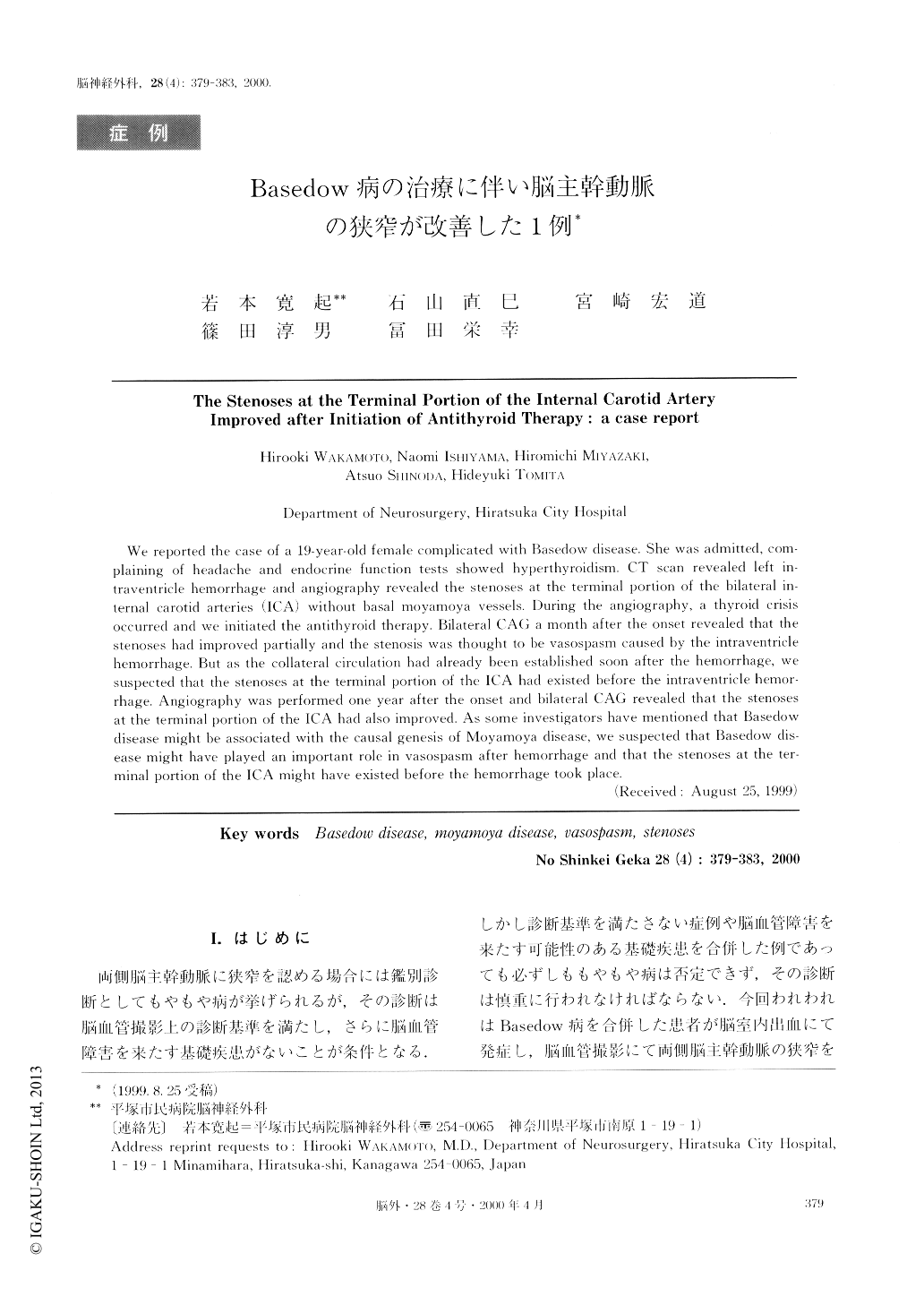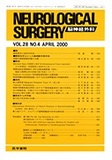Japanese
English
- 有料閲覧
- Abstract 文献概要
- 1ページ目 Look Inside
I.はじめに
両側脳主幹動脈に狭窄を認める場合には鑑別診断としてもやもや病が挙げられるが,その診断は脳血管撮影上の診断基準を満たし,さらに脳血管障害を来たす基礎疾患がないことが条件となる.しかし診断基準を満たさない症例や脳血管障害を来たす可能性のある基礎疾患を合併した例であっても必ずしももやもや病は否定できず,その診断は慎重に行われなければならない.今回われわれはBasedow病を合併した患者が脳室内出血にて発症し,脳血管撮影にて両側脳主幹全動脈の狭窄を認めた症例を経験した.もやもや病を疑って治療を始めたが,Basedow病の治療に伴い脳主幹動脈の狭窄が改善したことから,脳血管狭窄を来たす基礎疾患としてBasedow病の可能性が疑われた.今回画像所見を中心にBasedow病と脳血管狭窄との関連について若干の文献的考察を加え報告する.
We reported the case of a 19-year-olcl female complicated with Basedow disease. She was admitted, com-plaining of headache and endocrine function tests showed hyperthyroidism. CT scan revealed left in-traventricle hemorrhage and angiography revealed the stenoses at the terminal portion of the bilateral in-ternal carotid arteries (ICA) without basal moyamoya vessels. During the angiography, a thyroid crisis occurred and we initiated the antithyroid therapy. Bilateral CAG a month after the onset revealed that the stenoses had improved partially and the stenosis was thought to be vasospasm caused by the intraventricle hemorrhage. But as the collateral circulation had already been established soon after the hemorrhage, we suspected that the stenoses at the terminal portion of the ICA had existed before the intraventricle hemor-rhage. Angiography was performed one year after the onset and bilateral CAD revealed that the stenoses at the terminal portion of the ICA had also improved. As some investigators have mentioned that Basedow disease might be associated with the causal genesis of Moyamoya disease, we suspected that Basedow dis-ease might have played an important role in vasospasm after hemorrhage and that the stenoses at the ter-minal portion of the ICA might have existed before the hemorrhage took place.

Copyright © 2000, Igaku-Shoin Ltd. All rights reserved.


